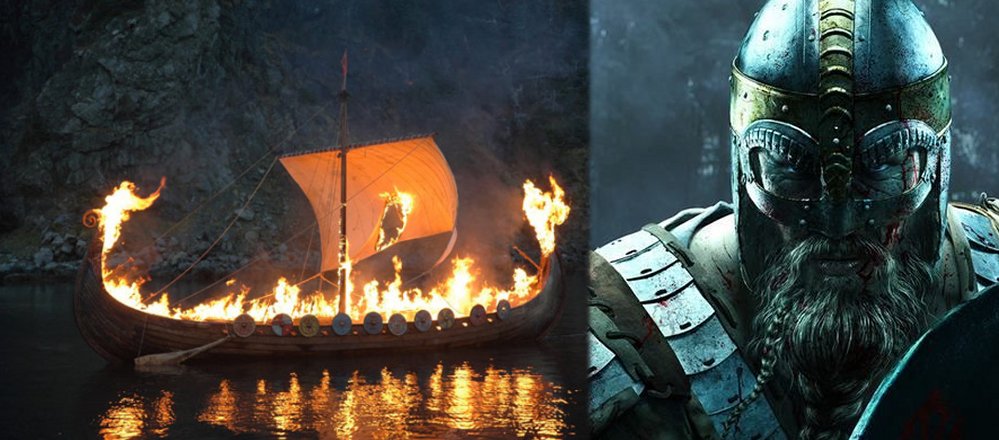Viking Burial Rituals: High Ancient Funeral Pyre Reflected High Social Status
Ellen Lloyd - AncientPages.com -Die as a true and brave warrior and you will go to Valhalla, the kingdom of the great Norse god Odin. That was the ultimate goal of every Viking. It was also the reason why warriors never feared, but rather embraced death
Fire played a central role in spectacular burial rituals practiced by the Vikings.
When a great Viking chieftain died, he received a ship burial. This involved placing the deceased on the ship, sailing him out to sea, and setting the Viking ship on fire. People could watch flames dance high in the air as they embraced the mighty warrior on his way to the afterlife.
By modern standards, it might sound crude, but Viking burials were intended to be a spectacular ritual. Viking funeral traditions involved burning ships and complex ancient rituals.
Ship Burial Was Reserved For Great Viking Warriors
Based on discovered archaeological evidence, it seems that the funeral boat or wagon was a practice reserved for the wealthy.
This type of burial was not common however, and was likely reserved for sea captains, noble Vikings, and the very wealthy. In Old Norse times, boats proper boats took several months to construct and would not have been wasted without a valid cause or a suitable amount of status.
Very few could receive a Viking ship burial. Image credit: Anne Burgess/Wikimedia
Another option was that the Viking was burned, and cremation was rather common during the early Viking Age. Ashes were later spread over the waters. The vast majority of the burial finds throughout the Viking world are cremations.
High Funeral Pyre Was A Symbol Of High Status
A high funeral pyre reflected high social status. By putting together, a wooden pyre, ten by twenty meters, reaching two meters up into the sky, one could be certain the blaze was burning bright.
Famous Vikings like Ragnar Lodbrok would receive a Viking ship burial.
“They used much more wood than was necessary—a few cubic meters would have been enough, but it was intended to be a spectacular ritual.
The number of symbolic gifts, such as beads, silver, and gold, increases with the size of the fire. The common denominator is that the dead is cremated, then you sift through the remains, and occasionally it was sealed with a mound,” says archaeologist Mogens Bo Henriksen from Odense City Museums.
Open Fire Was Used To Follow The Transformation And Say Farewell To The Deseaced
Henriksen’s research shows that special plants and woods were deliberately added to the fire to create smoke and smells. The cremation process was meant to activate all of our senses.
Vikings used open fire because people wanted to follow the transformation involved with the fire. It was an important part of the process of saying farewell to the dead.
Burial Rituals Took Place At Carefully Selected Locations
According to Henriksen, the pyres did not happen randomly or at random places. It was a carefully selected location.
It wasn’t about choosing the place where it was easiest to get firewood, but where the deceased should be buried,” he says.
The rituals were extensive and did not simply end with after the pyre had burnt down.
“There was more than burning going on here. Food was prepared, bone material was deposited in the ground, and animals and weapons were sacrificed as offerings. The graves are sealed and reopened. It wasn’t just a place where you burnt and buried people. The place represents the transition from the living to the dead. There’s a highly developed mindset behind these processes,” says Henriksen.
Henriksen has been excavating graves and the remains of pyres for the past three decades, leading to his cremation research. During this time, he discovered that ancient Viking tombs were dynamic.
I’ve looked at bones, urns, and gifts. But I began to think about the ritual itself. More and more, I think this was central,” says the archaeologist.
What we call a tomb today is a static thing or concept that represents a one-time treatment where the body is present in its entirety. But in ancient times, a tomb was a dynamic thing, says Henriksen.
“It could be opened, things could be placed there or taken out and closed again. A body could be split up,” he says. “We know that significant events took place after the cremation. The cremated remains are divided into portions, some are placed [in the tomb] while others are missing.”
Incredible Up Helly Aa Festival – Experience A Viking Ship Burial In Modern Times
During the Up Helly Aa festival in Lerwick, Shetland Islands, one can experience the sacrifice of a longship.
The annual festival began in 1870. It celebrates the influence of the Scandinavian Vikings in the Shetland Islands. The Norse ruled Shetland and neighboring island Orkney for about 500 years until they became part of Scotland in 1468.
Up Helly Aa is an incredible experience that cannot be easily forgotten. Several thousand people work the whole year to organize this fantastic event on the last Tuesday of January.
Written by Ellen Lloyd – AncientPages.com
Copyright © AncientPages.com All rights reserved. This material may not be published, broadcast, rewritten or redistributed in whole or part without the express written permission of AncientPages.com
More From Ancient Pages
-
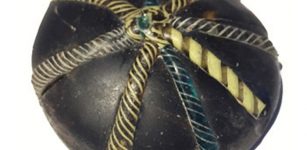 Anglo-Saxon Previously Unknown Monastic Or Trading Center – Discovered
Archaeology | Mar 7, 2016
Anglo-Saxon Previously Unknown Monastic Or Trading Center – Discovered
Archaeology | Mar 7, 2016 -
 On This Day In History: William Of Ockham Secretly Leaves Avignon, Fearing A Death Sentence From Pope – On May 26, 1328
News | May 26, 2016
On This Day In History: William Of Ockham Secretly Leaves Avignon, Fearing A Death Sentence From Pope – On May 26, 1328
News | May 26, 2016 -
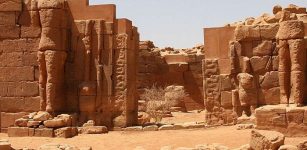 Kingdom Of Nubia: Pyramids And Priceless Secrets Of A Civilization Forgotten Long Time Ago
Civilizations | Feb 13, 2018
Kingdom Of Nubia: Pyramids And Priceless Secrets Of A Civilization Forgotten Long Time Ago
Civilizations | Feb 13, 2018 -
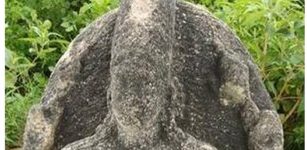 8th Century Sculpture Of Lord Vishnu Belonging To Pandya Dynasty – Unearthed
Archaeology | Sep 16, 2020
8th Century Sculpture Of Lord Vishnu Belonging To Pandya Dynasty – Unearthed
Archaeology | Sep 16, 2020 -
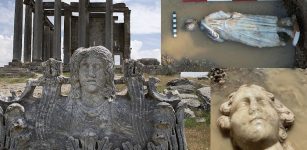 More Greek Gods’ Heads And A Life-Sized Statue Of A Man Unearthed In The Ancient City Of Aizanoi
Archaeology | Dec 28, 2022
More Greek Gods’ Heads And A Life-Sized Statue Of A Man Unearthed In The Ancient City Of Aizanoi
Archaeology | Dec 28, 2022 -
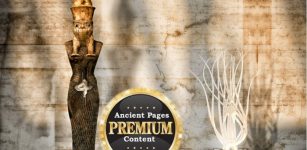 Ancient Manuscript In Museum Reveals Discovery Of Objects Unknown To Modern Science – Why Were The Ancient Time Capsules Hidden? – Part 3
Ancient Mysteries | Apr 14, 2021
Ancient Manuscript In Museum Reveals Discovery Of Objects Unknown To Modern Science – Why Were The Ancient Time Capsules Hidden? – Part 3
Ancient Mysteries | Apr 14, 2021 -
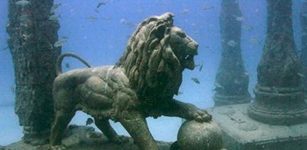 Stunning Underwater Photos Reveal Secrets Of Legendary Lost City Of Heracleion
Featured Stories | May 4, 2013
Stunning Underwater Photos Reveal Secrets Of Legendary Lost City Of Heracleion
Featured Stories | May 4, 2013 -
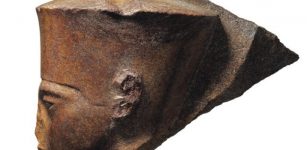 3,000-Year-Old Tutankhamun’s Head Sculpture Is Expected To Be Sold On Thursday In London
Archaeology | Jul 2, 2019
3,000-Year-Old Tutankhamun’s Head Sculpture Is Expected To Be Sold On Thursday In London
Archaeology | Jul 2, 2019 -
 Baffling Copper Scroll – A Treasure Map Leading To A Secret Lost Temple?
Featured Stories | Mar 17, 2018
Baffling Copper Scroll – A Treasure Map Leading To A Secret Lost Temple?
Featured Stories | Mar 17, 2018 -
 Delphic Mysteries – Extraordinary Encounter At An Ancient Temple – Part 2
Ancient Mysteries | Apr 3, 2023
Delphic Mysteries – Extraordinary Encounter At An Ancient Temple – Part 2
Ancient Mysteries | Apr 3, 2023 -
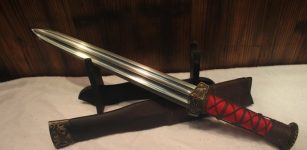 Deeper Look Into Chinese Swords Throughout The History Of The Dynasties
Featured Stories | Sep 19, 2018
Deeper Look Into Chinese Swords Throughout The History Of The Dynasties
Featured Stories | Sep 19, 2018 -
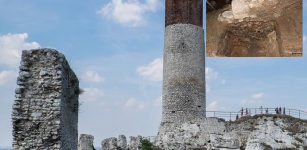 Mysterious Unknown Caves And Tunnels Discovered Beneath The Olsztyn Castle
Archaeology | Jul 31, 2020
Mysterious Unknown Caves And Tunnels Discovered Beneath The Olsztyn Castle
Archaeology | Jul 31, 2020 -
 Unique Ancient Structure With Mysterious V-Shaped Carvings, Wine Press And More Discovered In The City Of David, Jerusalem
Archaeology | Jan 24, 2025
Unique Ancient Structure With Mysterious V-Shaped Carvings, Wine Press And More Discovered In The City Of David, Jerusalem
Archaeology | Jan 24, 2025 -
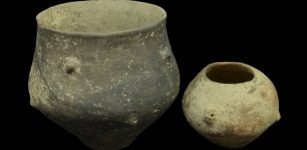 New Insight Into Genetic History And Social Structures In Neolithic And Bronze Age Croatia
Archaeology | Aug 18, 2021
New Insight Into Genetic History And Social Structures In Neolithic And Bronze Age Croatia
Archaeology | Aug 18, 2021 -
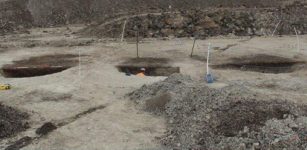 Significant Mesolithic Site With Unusual Pits Discovered In Bedfordshire
Archaeology | Jul 3, 2023
Significant Mesolithic Site With Unusual Pits Discovered In Bedfordshire
Archaeology | Jul 3, 2023 -
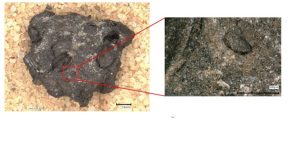 Millet Bread And Pulse Dough From Early Iron Age South India
Archaeology | Dec 20, 2021
Millet Bread And Pulse Dough From Early Iron Age South India
Archaeology | Dec 20, 2021 -
 Leprechaun: One Of The Most Famous And Powerful Creatures Of The Irish Faerie Folk
Celtic Mythology | May 8, 2016
Leprechaun: One Of The Most Famous And Powerful Creatures Of The Irish Faerie Folk
Celtic Mythology | May 8, 2016 -
 New York Was Once Called New Amsterdam – History Behind The Change Of Name
Ancient History Facts | Jan 14, 2017
New York Was Once Called New Amsterdam – History Behind The Change Of Name
Ancient History Facts | Jan 14, 2017 -
 Mysterious Sumerian Star Tablet And Strange Divine Omens – Sacred Knowledge Of The Gods – Part 1
Ancient Mysteries | Feb 14, 2021
Mysterious Sumerian Star Tablet And Strange Divine Omens – Sacred Knowledge Of The Gods – Part 1
Ancient Mysteries | Feb 14, 2021 -
 Book Of Kells: Illuminated Medieval Manuscript From Monastery On Iona, Scotland
Artifacts | Feb 8, 2018
Book Of Kells: Illuminated Medieval Manuscript From Monastery On Iona, Scotland
Artifacts | Feb 8, 2018

